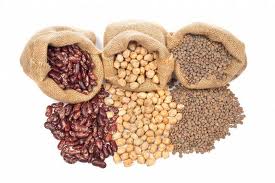Drying process in industrial sector – Part 2
Friday, January 27th, 2012 4:05:18 by Ahmed Tariq
Drying process in industrial sector – Part 2
However, for this process the drum and spray dryers are the types most commonly considered. Firstly, drum dryers are used for liquids and dilute slurry feeds. It and can be an alternative to the spray drier if the product is to be
produced in the form of a film on heated surface, and the material is not very heat sensitive. (Fermentation technology, 1987)
A drum drier consists of an internally heated revolving drum on which the film of the soil mixture is deposited and dried. Drum dryers are usually steam heated and are thermally more efficient than spray drier.
The film of solid is formed by immersing part of the drum on a trough of the cream or by spraying the feed on the surface of the drum. Double drum dryers also operate in the same way as the single roller drum dryer but with an increased
capacity and the product is therefore formed in the nip (space between the drums) of the dryer.
A typical film drum dryer with a 4 ft (1.2 m) by 10 ft (3 m) long drum can evaporate about 270 kg/h (APV dryer handbook, 2000).
Spray dryers are also used for liquids and dilute slurry feeds but this can also be used to dry any material that can be pumped. As an alternate to the drum dryer, the spray dryer offers a better solution to many drying problems.
Many materials including food products, which would suffer from thermal degradation if dried by other methods, can be better processed by spray drying.
In the spray dryer, the rapid flash evaporation and its accompanying cooling effect limits the temperature exposure for the material. The drying time is also of few seconds which helps prevent nutrients from thermal degradation.
The continuous method of operation enables large outputs and with the correct application of control equipment and supreme quality product can be guaranteed with low labor costs.
A typical spray dryer can evaporate up to 10,000 kg/hr of moisture (APV dryer handbook, 2000). Moreover, spray dried vitamins are much better than roller dried products due to their superior quality (K Mater’s, 1979) and the desired
size, shape and moisture content in the end product is better controlled by spray driers.
Other advantages of using spray dryer are:
- Only one typical spray dryer is required to perform the duty.
- The desired product quality can be achieved and specifications met through the dryer design.
- Good Control of particle size.
- Minimal loss of nutritional value to the product.
- Adaptable in complete automatic control and continuous process.
Short URL: https://www.newspakistan.pk/?p=10737

















